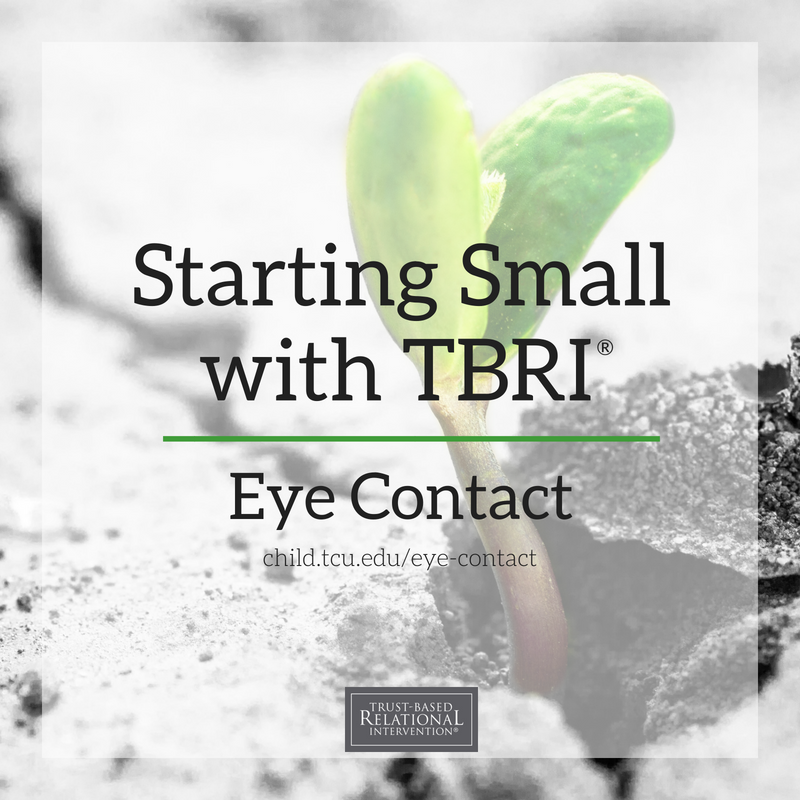 by: Amanda Purvis
by: Amanda Purvis
Often times when people first hear about Trust-Based Relational Intervention® (TBRI®) they can feel overwhelmed. If that’s you, take a deep breath. Just like with learning any new skill, we must start small. In this series, we’ll give easy tips to help you start using TBRI®in your home or with the children you serve.
Eye Contact
“Amanda Grace! Look at me now!”
I can’t tell you how many times I heard that line when I was growing up. It’s a fairly normal childhood experience, as we often have our kids look at us when they’re in trouble, when we need to reiterate something, or clarify a rule. While eye contact certainly serves the function of getting attention, a key to Trust-Based Relational Intervention®(TBRI®) is utilizing eye contact first to build connection. Loving, warm eye contact is a vital component in building secure attachment and attuning to our children, especially if you brought your child home later and didn’t get to feed, cuddle, and gaze into your child’s eyes as we often do with young babies. If the children in our care missed this experience, loving eye contact is even more critical to building the attachment relationship.
Now, when we talk about eye contact, we don’t mean the glaring, angry, “look-what-you-did” eyes. We want soft and gentle eyes, the same eyes that look at your child with while they sleep, or how you would look at them if you were cuddling them as a precious little infant. If you only find yourself asking your child to look at you when they’re in trouble, it’s time to re-think the goal of eye contact. Remember, we’re looking to reframe eye contact as a connectingstrategy rather than a correctingstrategy.
Try asking your child for “good eyes and hands” (for a younger child) or simply to see their eyes (older children and teens) the next time you need their attention. And then look into their eyes and tell them something you love about them or something positive you noticed about their behavior. By giving our children warm, adoring eye contact, we show them how wesee them. As Dr. Karyn Purvis would say, we reflect their preciousness to them.
Tips and Takeaways:
- Eye contact is key to the attachment relationship.
- Eye contact can be intimidating for children and teens who have experienced trauma. Be patient and never demand eye contact.
- In an effort to make eye contact safe to a fearful child, be playful. If a child denies your request for eye contact, try asking, “Are those eyes purple? Are they orange?! Oh, that’s right! They’re beautiful brown.”
- The way we look at our children reflects how we see them. Look in the mirror and pretend to have a conversation with your child. If your face looks glaring or harsh, be mindful of how it appears to your child.
- Not every situation calls for a big smile, but we can still make sure our eyes are gentle and approachable. If you struggle to have an approachable facial expression, try raising your eyebrows to soften your countenance.
would like to buy this book, Stating Small. where can i do that?